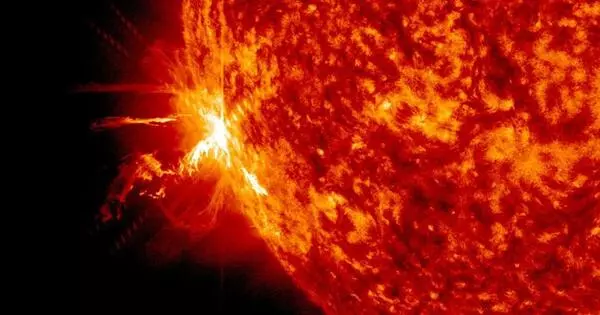A group of Japanese astronomers simultaneously observed a superflare on a star from the ground and from space to get a more thorough image of it. The flare that was noticed began with a tremendous, fast-erupting prominence. These findings help us understand how superflares and stellar prominence explosions take place.
Superflares from some stars have been observed that are more than ten times bigger than the biggest solar flare ever observed on the sun. Space weather is a term used to describe how solar flares’ hot, ionized plasma affects the atmosphere surrounding the Earth. The evolution of any planets that form orbiting the star, or the evolution of any life that forms on those planets, must be significantly impacted by more intense superflares. But the details of how superflares and prominence eruptions on stars occur have been unclear.
A team led by Shun Inoue of Kyoto University utilized the 3.8-m Seimei Telescope in Japan and the Transiting Exoplanet Survey Satellite (TESS) to observe the binary star system V1355 Orionis, which is known to produce large-scale superflares on a regular basis. V1355 Orionis is a star in the constellation Orion that is 400 light years distant.
With continuous, high temporal resolution observations, the team was able to capture a superflare. According to data analysis, the superflare was caused by a phenomena known as a prominence eruption. Even the most conservative estimates far exceed the star’s escape velocity (347 km/s), demonstrating that the prominence eruption was capable of escaping the star’s gravity and evolving into Coronal Mass Ejections (CMEs). Calculating the eruption’s velocity requires making some assumptions about aspects that aren’t directly observable. The prominent eruption, which carried billions of tons of material, was also one of the largest ever seen.
These findings were presented in Inoue et al.’s article from The Astrophysical Journal titled “Detection of a high-velocity prominence eruption leading to a CME associated with a superflare on the RS CVn-type star V1355 Orionis” on April 27, 2023.
















